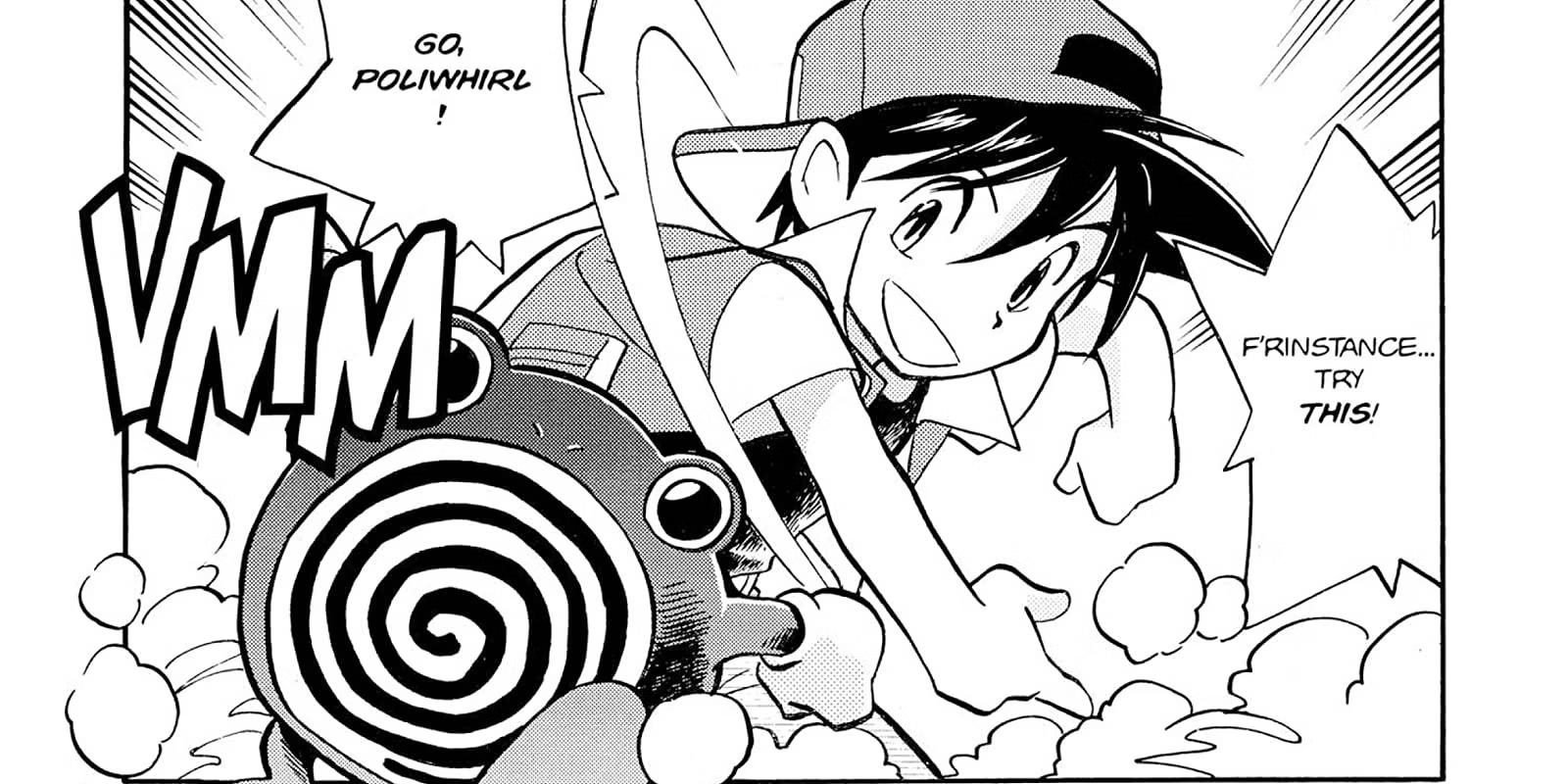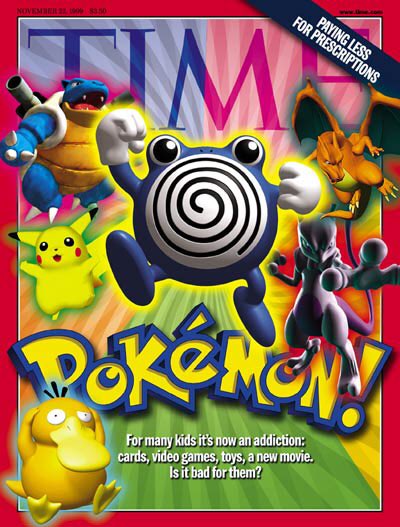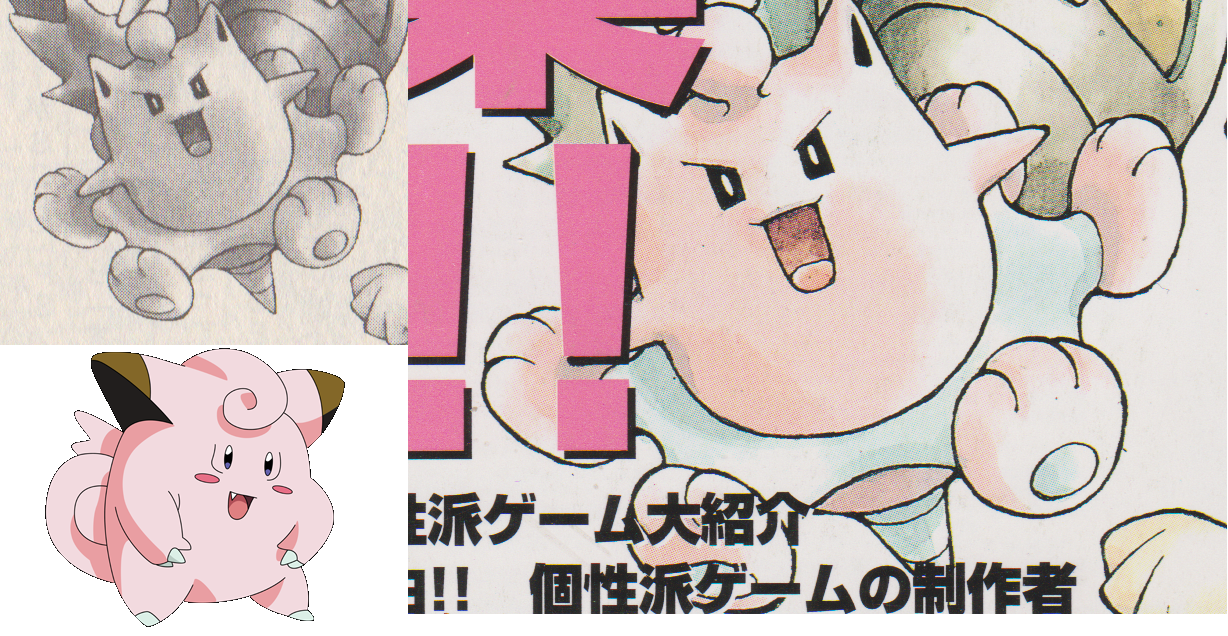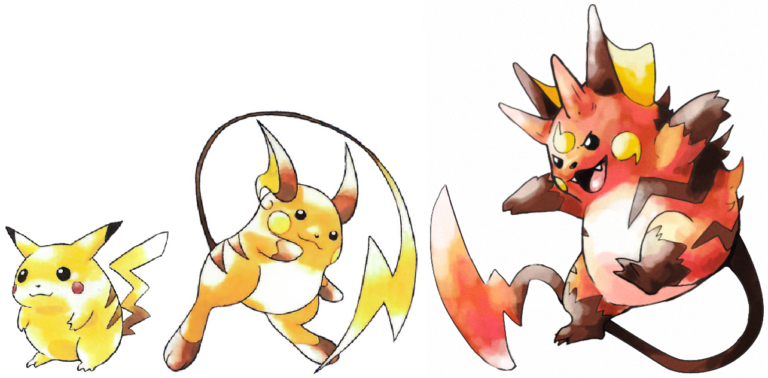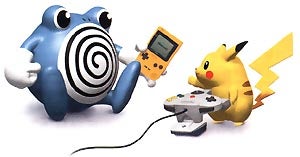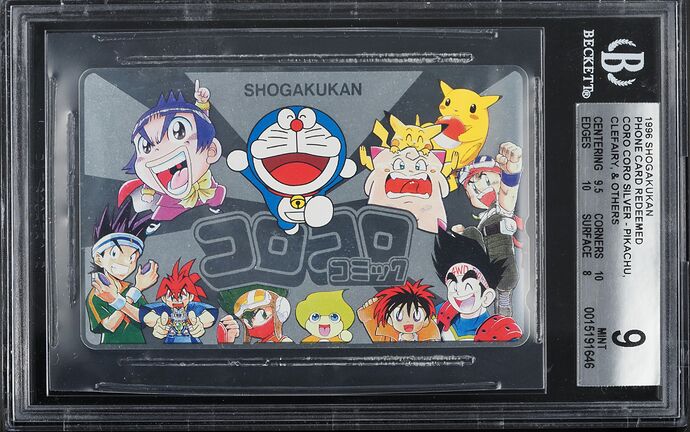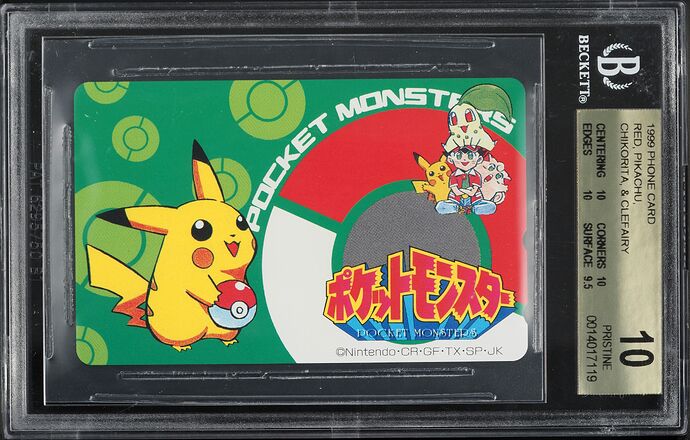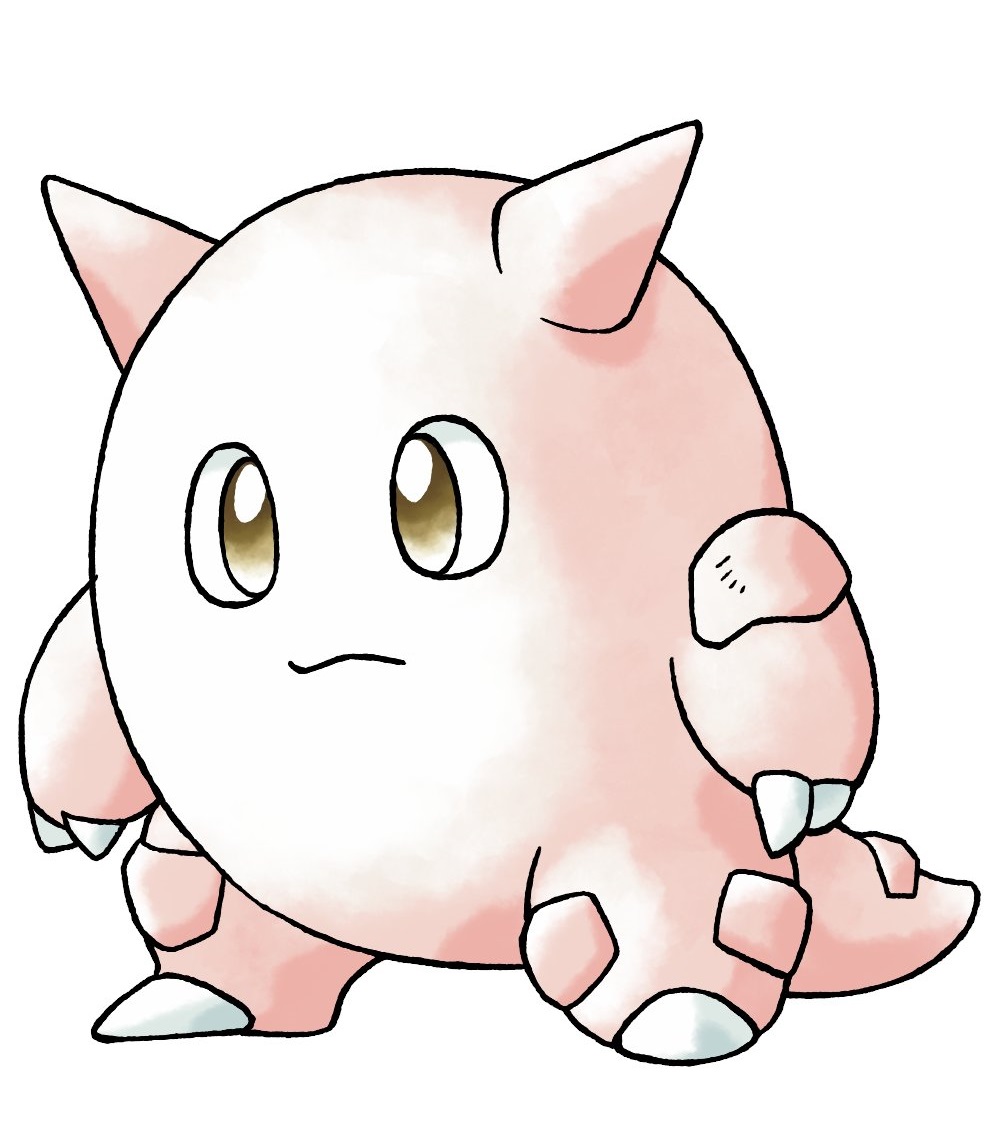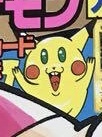So obviously, we all know that Pikachu is the mascot of the Pokemon franchise. It was Ash’s first Pokemon in the anime. It’s your designated starter in Pokemon Yellow (for better or for worse, but mostly for worse). It has the most products and merchandise of any Pokemon species. The rarest and most valuable cards in the TCG hobby typically feature Pikachu.
But how did this little electric rodent ultimately earn the title as Pokemon’s mascot?
Well, it wasn’t as simple as you may think.
As a matter of fact, in the early stages of Pokemon development, Pikachu wasn’t even considered a possibility to be the mascot.
So who was?
Well, there were a few options before Pikachu.
Rhydon

Ah, my personal favorite Pokemon.
Most people here are probably aware of the fact that Rhydon was actually the first Pokemon ever made, which is why its index number is 001. Clearly, Satoshi Tajiri had an affinity for Rhydon’s style of design, as Kangaskhan was the second Pokemon ever created (Index No. 002), and Nidoking comes in at No. 007.
You can see Rhydon’s influence in the early games, as Rhydon statues are scattered about the buildings in Red and Blue, particularly in Gyms (you can actually fish inside the statues due to a glitch, as seen below).

Clearly, Rhydon was one of the top early choices to be the mascot of the franchise, and this was before Rhyhorn itself even existed. So why didn’t it make the cut?
Well, a rumor is that the issue with Rhydon was that it was too male-friendly. Pokemon was a game aiming to hit a largely equal demographic of both boys and girls, so the idea of a giant, gray, rhinoceros-looking dinosaur as the cover star just wouldn’t cut it. After all, what were they going to do? Make Pokemon Gray? Not exactly kid-friendly in general, let alone for girls.
The same reasoning is applied as for why the infinitely popular Charizard was never used as the mascot. A giant fire-breathing dragon was just too male-centric. That being said, there isn’t all that much evidence to suggest that Charizard was ever really considered for that role to begin with.
As a matter of fact, Charizard’s index number is 180, making it the last Gen 1 starter developed and indicating that it almost never even existed in the original games seeing as how there were only 151 Pokemon (obviously, the 29 other entries into the index number list were either pushed ahead to other generations, scrapped entirely or resulted in errors [e.g. MissingNo and M]).
Pretty crazy to think about.
Anyway, while Rhydon was the first Pokemon ever made and was likely considered by developers for the title of mascot, fate (and logistic reasoning) was never going to allow that to come to fruition.
Poliwag

This one is interesting.
Rhydon was the first Pokemon, so you could see why it had an outside shot of taking center stage for the franchise, but Poliwag, whose index number is 071, indicating that it was developed somewhat late?
Why?
Well, Tajiri was the creator of Pokemon, after all, and Poliwhirl (Index No. 111) was his favorite character. As a result, Poliwag—not Pikachu, Charmander, Squirtle or Bulbasaur—was Red’s first Pokemon in the Pokemon Adventures manga.
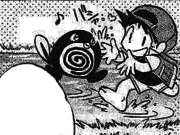
There is a moment during the manga where Red is drowning and Poliwag is helpless to save him, so it evolves into Poliwhirl and comes to Red’s rescue.
Rumor has it that Poliwrath’s design was a direct result of Tajiri’s love for Poliwhirl. Ever wonder why Poliwhirl didn’t evolve into a frog for its final form? Apparently, Tajiri rejected the idea of Poliwhirl’s design undergoing a significant overhaul, which was why Politoed was initially scrapped as the final evolution for the Poliwag line. Instead, Poliwhirl turns into Poliwrath, who doesn’t look much different aside from a bulkier physique.
Of course, Politoed was subsequently added as an alternative evolution in Gen 2.
Additionally, Poliwhirl was really pushed as a mascot for a while, even after Pikachu obtained the title. Tons of Poliwhirl merchandise was produced at the onset of the Pokemon craze, and Poliwhirl even appeared on the cover of TIME Magazine, taking the spotlight away from Pikachu, Charizard and other popular species:
But much to Tajiri’s chagrin, the Poliwag line never quite caught on. Perhaps all of the developers disagreed and didn’t think that pushing the tadpole trio would be the best idea. Regardless of what the reasoning was, it didn’t take long for the Poliwag line to fade into obscurity,
Similar to Rhydon, Clefairy was one of the first Pokemon ever developed, coming in at No. 004 on the index number list. But unlike Rhydon, Clefairy made a very serious push to become the series mascot and likely was up until the very last moment.
While Poliwag was Red’s first Pokemon in Pokemon Adventures, Clefairy was Red’s starter in a the first manga: Pokemon Pocket Monsters.
It looked quite a bit different then, too:
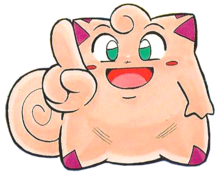
A further nugget of information is that Clefairy (known as “Blockhead Clefairy” in the manga) was actually Pikachu’s cousin in Pokemon Pocket Monsters.
Now we’ll get a little deeper and reveal some information that even experienced Pokemon aficionados may not know.
We all know Pokemon Yellow, arguably the most iconic game in the history of the franchise due to its parallels to the anime (the undefeated Sandshrew guy even exists in the game) and for the fact that you can have all of Pikachu, Charizard, Blastoise and Venusaur on your team.
But did you know that Pokemon Yellow may not have been the only Red and Blue/Green spinoff that Gamefreak intended? There may have been another game:
Pokemon Pink.
Thanks to a massive Nintendo data breach that resulted in tons of leaked documents a few years ago, we were able to see that all throughout Pokemon Yellow’s source code, the color “pink” constantly surfaced. Not only that, but the phrase “Pokemon Pink” also came up.
While this is all conjecture and that a “Pokemon Pink” title has never officially been confirmed by Nintendo, it’s hard not to connect the dots.
Why would the term “Pokemon Pink” surface in Pokemon Yellow’s source code? Is it just a coincidence that we see this knowing that Clefairy was pushed as the initial mascot (more on that in a second)? Did the franchise intend to release this title alongside of Yellow? Or maybe the initial plan was just to release Pink without Yellow?
It’s an interesting thought, to say the least.
Now back to Clefairy and the whole mascot discussion.
If Tajiri and Co. were potentially this serious about making Clefairy the face of the franchise, why did things change?
Well, remember earlier when I mentioned that the likely reason that Rhydon was pushed aside was because it was too male-centric? With Clefairy, it was the opposite: a cute pink ball of fluff would likely push many boys away.
Furthermore, Clefairy’s design was somewhat common. Maybe not in terms of its bodily characteristics, but more in terms of its color. There are tons of pink characters that children see on a daily basis, so would Clefairy really stand out as a mascot?
Given that Clefable’s index number is 142, it seems pretty evident that Clefairy (No. 004) was originally not supposed to evolve and was the top mascot choice for quite some time. Contrast that with Pikachu and Raichu, who are 084 and 085, respectively, denoting that Pikachu was never meant to stand on its own.
But ultimately, Clefairy didn’t make the cut.
That brings us to the coverboy: Pikachu.
We all just accept Pikachu as the franchise mascot nowadays, but back during development in Japan in the mid-to-late '90s, Pikachu wasn’t really considered for much of anything special. At first.
Keep in mind that in Red and Blue, Pikachu isn’t very obtainable. You have a slim chance of encountering one in Viridian Forest, and if you don’t get one then, you have to wait until the back half of the game to pick one up in the Power Plant, and by that point, you have probably already trained up a full team of six.
Pikachu wasn’t a starter. It wasn’t like Pidgey or Rattata. You couldn’t just find a bunch of them in the grass.
This actually ended up favoring Pikachu with developers (more on that in a bit).
When Tajiri and associates began to realize that Clefairy’s feminine-favoring design probably wouldn’t make sense from a business standpoint, they decided to look for a character that was more neutral in its features.
That’s when Pikachu came on the scene.
A chubby yellow rodent with an initially white belly, Pikachu’s design has obviously changed considerably over the years, so much so that you have to go all the way back to Bandai Carddass to even catch a glimpse of white-bellied Pikachu on a card. Even more, Pikachu has definitely been hitting the treadmill and cutting out sweets and potato chips over the last couple of decades.
But not only would Pikachu attract both boys and girls, its design was also somewhat unique. While Clefairy’s pink was pretty widespread among children’s toys and TV shows, Pikachu’s yellow-orange hue wasn’t exactly a common sight.
The anime development team also helped Pikachu’s case by implementing Pikachu’s voice. The “Pika Pika” sound that we all can identify today was one of the main additions that pushed Pikachu ahead of the pack.
Now, recalling what I said a few paragraphs ago about Pikachu not being readily available in Red and Green (remember: Green was the Blue of Japan); according to Junichi Masuda, Pikachu’s relative rarity had to do with the fact that developers deemed it too cool-looking to be that common (along those lines, let’s remember that Clefairy only lurks in Mt. Moon and has a low appearance rate).
Making Pikachu a rare encounter also assisted in the mouse’s ascension to mascot status. Cute, unique, rare and able to hit a wide demographic? It seemed like the little guy was checking all of the boxes.
And as an aside, given that Clefairy was probably the original mascot and was likely meant to be a standalone Pokemon based on the fact that its index number is so far apart from Clefable’s, it makes you wonder if Gamefreak ever would have even invented Raichu had it intended on making Pikachu the face of the franchise from the beginning.
Plus, the Pikachu line was originally meant to be three stages, with the final stage being a Pokemon called Gorochu (this was confirmed by Atsuko Nishida herself), further evidence that Gamefreak never planned on prioritizing Pikachu in the dawn of Pokemon.
To save space in the game data and for game balance, Gorochu was removed.
This is just my speculative guess, but the fact that Pikachu gets all of the glory with promo cards, special abilities and items in the mainline games themselves, etc. lends credence to the notion that if Gamefreak could go back in time, it would probably prefer to erase Raichu from existence.
Conclusion
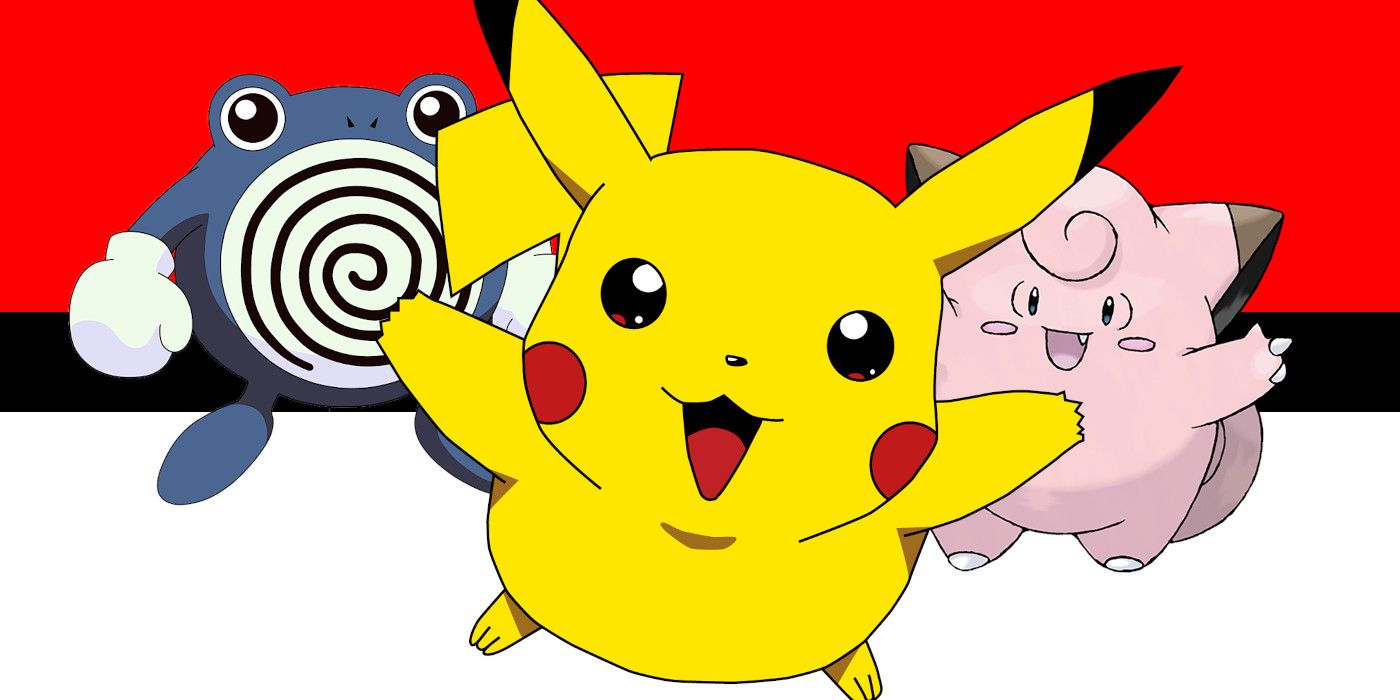
While we will likely never know for sure exactly what went on behind the scenes in the early stages of Pokemon’s development, the story is certainly intriguing.
Was Clefairy really the first mascot? As far as I know, it has never been officially confirmed by Tajiri, Masuda, Ken Sugimori or any other Gamefreak employees, but all of the evidence seems to indicate that it was.
Was there really supposed to be a game called “Pokemon Pink?” That one seems to be more of a shot in the dark, but it’s hard to ignore the clues in Yellow’s source code.
Regardless, it’s mysteries like these that contribute to the overall mystique and legendary nature of what Pokemon is and what it has become.
Hope you all enjoyed the read ![]()
